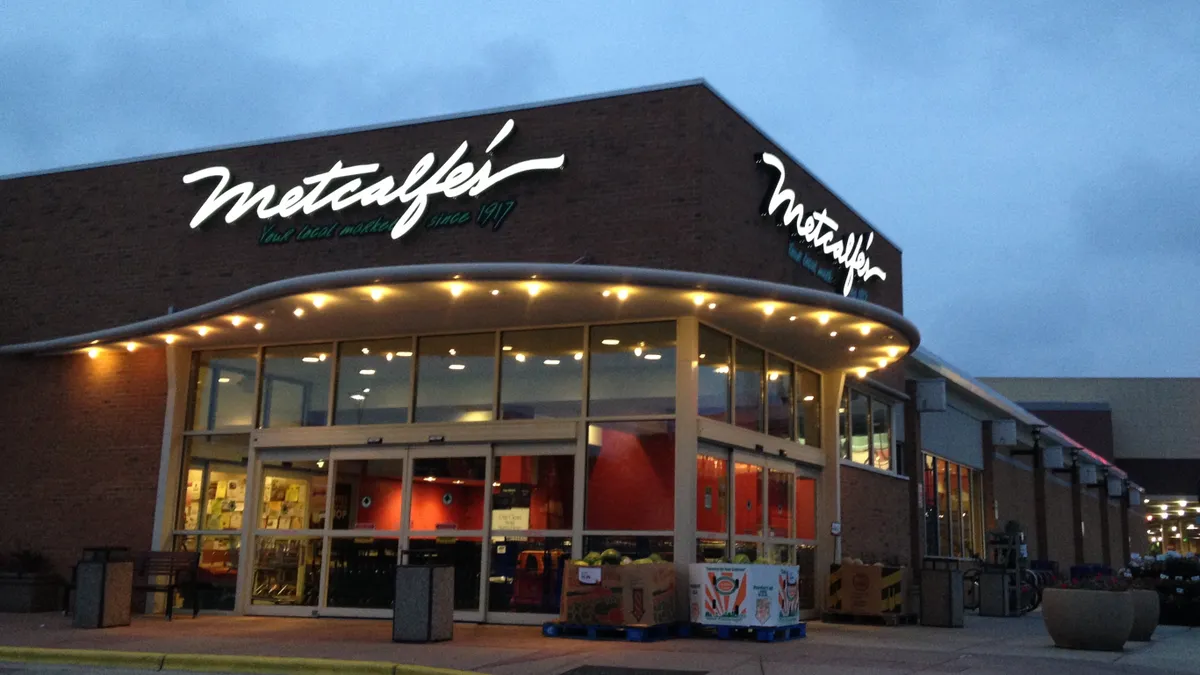Dive Brief:
- SpartanNash generated a decline in net and comparable-store sales during the second fiscal quarter of 2024, with the company’s retail and wholesale operations both losing ground for the third quarter in a row.
- Net sales were off 3.5% in Q2 compared with the same period a year ago, to about $2.2 billion, while comparable-store sales slipped 2.5%. Net earnings declined to 34 cents per diluted share, weighed down by lower unit volumes and higher restructuring and asset impairment costs.
- SpartanNash continued to feel the effects of its declining wholesale business with Amazon during the quarter, but the company expects that downward trend to become less pronounced going forward, CFO Jason Monaco said Thursday during an earnings call.
Dive Insight:
While SpartanNash has been dealing with multiple obstacles that have held back its performance, the company has recently made significant progress in its efforts to reinvigorate its business, CEO Tony Sarsam said during the call.
In particular, Sarsam said, SpartanNash has been devoting attention to what he called a “merchandising transformation” as it looks to blunt trends such as decelerating inflation and declining spending on groceries that have been dogging food retailers.
SpartanNash is “focused on what we can control and not standing still in this environment,” Sarsam said. “While the headwinds are greater than expected, our long-term strategic initiatives are helping us offset the challenging market conditions.”
The company’s wholesale segment, which accounts for more than two-thirds of its revenue, posted net sales in Q2 of about $1.5 billion, a year-over-year decline of almost 5%. Net sales for SpartanNash’s retail division fell by less than 1%, to $676 million.
SpartanNash’s strategy includes using data about commodity prices and other aspects of the supply chain to help keep costs for its customers down, Sarsam said. SpartanNash is also stepping up its emphasis on private brands and is “very pleased” with the early performance of Finest Reserve, the premium line the company rolled out in February, he said.
Shoppers are “looking for indulgence. And if we can offer indulgence at a better price than we think we win overall. So that's sort of the story and it's been working,” Sarsam said, adding that the company has calculated that its private label penetration could expand by 3 percentage points.
SpartanNash’s retooled approach to merchandising also extends to its ongoing efforts to modernize stores, a project Sarsam said “leverages the learnings from the success of our enhanced category planning, our remodeling program and our recent retail acquisitions.”
The company expects the initiative to deliver double-digit growth, with an emphasis on higher volume, lower prices and a stepped-up focus on fresh foods, he said, noting that the company has reduced prices on more than 6,000 items at remodeled stores.
In addition, Sarsam said SpartanNash’s business distributing groceries to commissaries and exchanges on U.S. military installations was up during Q2 for the 10th consecutive quarter, which he said helped offset the decline in its business with Amazon.
Sarsam said SpartanNash’s acquisition in April of Wisconsin grocer Metcalfe’s Market is also bearing fruit for the company. SpartanNash has started supplying Metcalfe’s with groceries in place of the third-party distributor it previously worked with and anticipates the chain will bring in $100 million in annual revenue, he said.
“I'm actually really optimistic about the M&A prospects in the future,” Sarsam said. “I think it’s been a little sluggish year in terms of opportunities last year plus for reasons that everybody is quite familiar with in terms of the capital markets. But I think we’re going to see more … we’re looking at a lot of different types of opportunities, and I’m bullish.”













